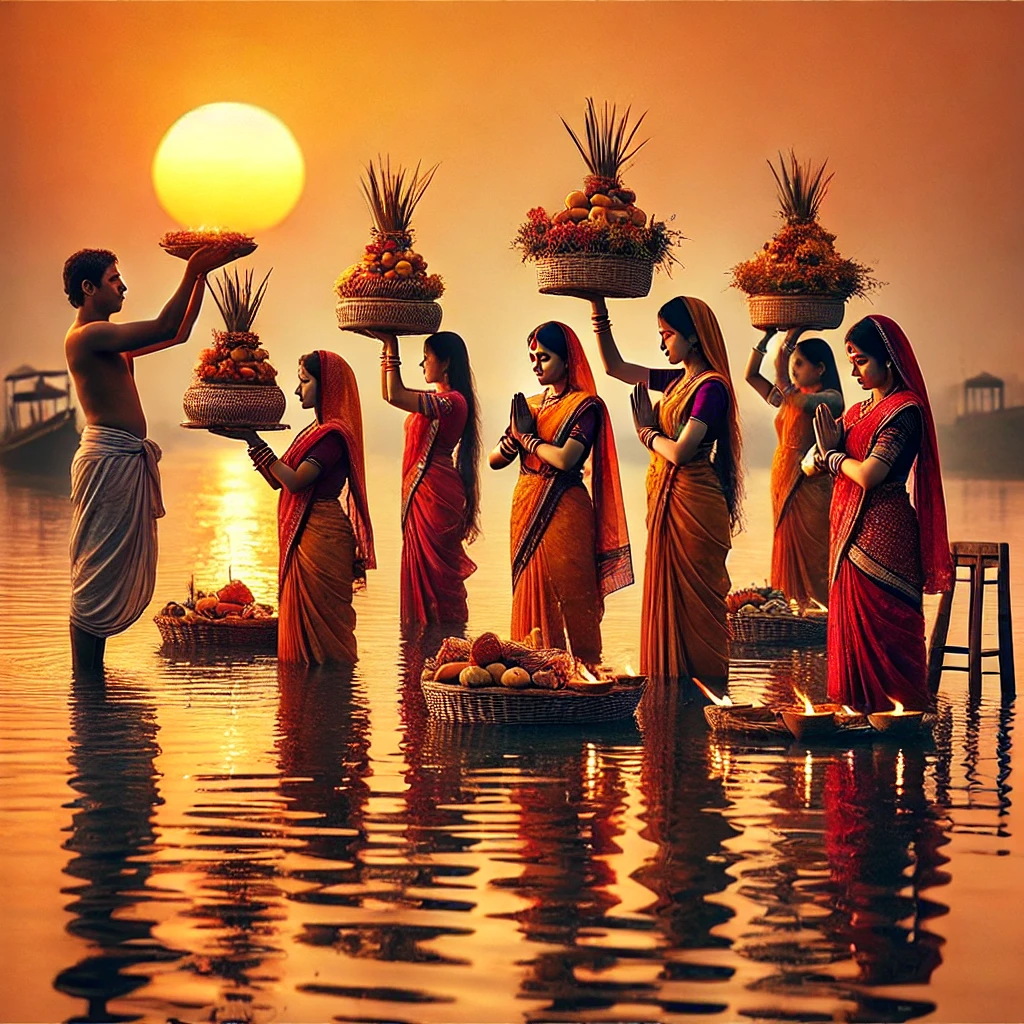What Makes Chhath Puja the Heartbeat of Bihar’s Culture and Community?
Chhath Puja isn’t just a festival for the people of Bihar; it’s a celebration that embodies the very spirit of the region, uniting culture, community, devotion, and a profound respect for nature. Rooted in ancient practices, this four-day festival dedicated to the Sun God (Surya) and Chhathi Maiya transcends religion, bringing families and communities together in a powerful expression of gratitude and reverence. Here’s why Chhath Puja has become the heartbeat of Bihar’s culture and community.
1. A Celebration of Identity and Cultural Heritage
• For people in Bihar, Jharkhand, and Eastern Uttar Pradesh, Chhath Puja is not just a religious event; it’s an integral part of their identity. Celebrated by millions, it’s a cultural touchstone that binds people together, creating a shared sense of pride and belonging.
• Passed down through generations, Chhath is more than tradition—it’s a legacy that embodies Bihar’s rich heritage and values. Families often gather from across the country and the world, returning to their roots to celebrate together, reinforcing a strong cultural bond.
2. Honoring Nature’s Bounty and Agricultural Roots
• Bihar, being primarily an agricultural state, has always had a close connection to nature, and Chhath Puja is a reflection of this relationship. The Sun God is honored for sustaining life and enabling the growth of crops, and the rituals around water bodies show a deep respect for rivers and natural resources.
• Celebrated right after the harvest, Chhath Puja is a time for farmers to offer thanks for a successful season. The arghya (water offerings) given to the setting and rising sun symbolize gratitude for life-giving energy, making the festival a beautiful acknowledgment of nature’s bounty.
3. Devotion Through Discipline and Purity
• Chhath Puja is known for its strict, disciplined rituals, where devotees fast, abstain from drinking water (nirjala fasting), and immerse themselves in purity. The austerity practiced during these days signifies a deep sense of devotion, as devotees believe that these rituals cleanse their bodies and souls, bringing blessings of health, happiness, and prosperity.
• The Puja is a test of endurance, patience, and faith, and each ritual—from bathing in rivers to standing in water to offer prayers—is performed with utmost sincerity. The community admires and respects the dedication displayed, as it showcases the strength of devotion in the heart of Bihar.
4. Building Community Bonds and Shared Values
• Chhath Puja is a community-driven festival, bringing people together in shared preparation and celebration. Families gather at riverbanks, ponds, and other water bodies, forming a collective atmosphere of support and unity.
• Preparing traditional prasad like thekua, rice, fruits, and sweets becomes a communal activity, with neighbors and relatives working together. This collective effort strengthens social bonds and emphasizes the values of collaboration, respect, and shared responsibility. During Chhath, there is a unique sense of togetherness that fosters mutual support and respect across communities.
5. Health and Spiritual Benefits in Line with Ayurvedic Principles
• The practices observed during Chhath, such as fasting, sun exposure, and river bathing, have Ayurvedic roots. Exposure to the early morning and evening sun is believed to enhance ojas (vital energy) and improve mental clarity (sattva).
• The discipline of fasting without water and adhering to strict dietary purity is seen as a way to cleanse the body and mind. By participating in these rituals, devotees align with natural rhythms, experiencing benefits that go beyond the physical—promoting peace, clarity, and spiritual well-being.
6. Mythology and Deep-Rooted Faith
• Chhath Puja is steeped in mythological significance, with legends that connect it to revered deities and epic tales. The story of Lord Rama and Sita observing Chhath upon their return to Ayodhya connects the festival with the Ramayana, creating a sacred context that enriches its spiritual depth.
• Another popular legend tells of Karna, the son of Surya, performing daily sun worship, which granted him unmatched strength. Stories like these have nurtured deep-rooted faith among devotees, who believe that their dedication during Chhath will bring them similar blessings.
7. Pride in a Festival That Has Gained Global Recognition
• As Bihari communities have migrated across India and abroad, they have carried the tradition of Chhath Puja with them, leading to its celebration far beyond Bihar. Today, Chhath Puja is observed across Delhi, Mumbai, and internationally, creating a powerful symbol of Bihari culture that resonates worldwide.
• For people from Bihar, the festival has become a source of pride, representing the enduring values of their heritage. The worldwide celebration of Chhath is a testament to its universal appeal, as more people come to appreciate its unique blend of devotion, discipline, and nature reverence.
Conclusion: A Festival that Embodies the Heart of Bihar
Chhath Puja is much more than a festival—it’s a cultural phenomenon that captures the essence of Bihar and its people. It unites families, connects communities, honors nature, and celebrates life with sincerity and devotion. Through the shared experience of fasting, praying, and celebrating together, Chhath Puja continues to be the heartbeat of Bihar, infusing the region with resilience, unity, and pride.
In a world of change, Chhath Puja remains a constant, a celebration of faith and tradition that strengthens the bonds of family and community. For the people of Bihar and beyond, it’s a reminder that true strength lies in respect for nature, dedication to faith, and the unbreakable power of togetherness.










 Know your Dosha
Know your Dosha